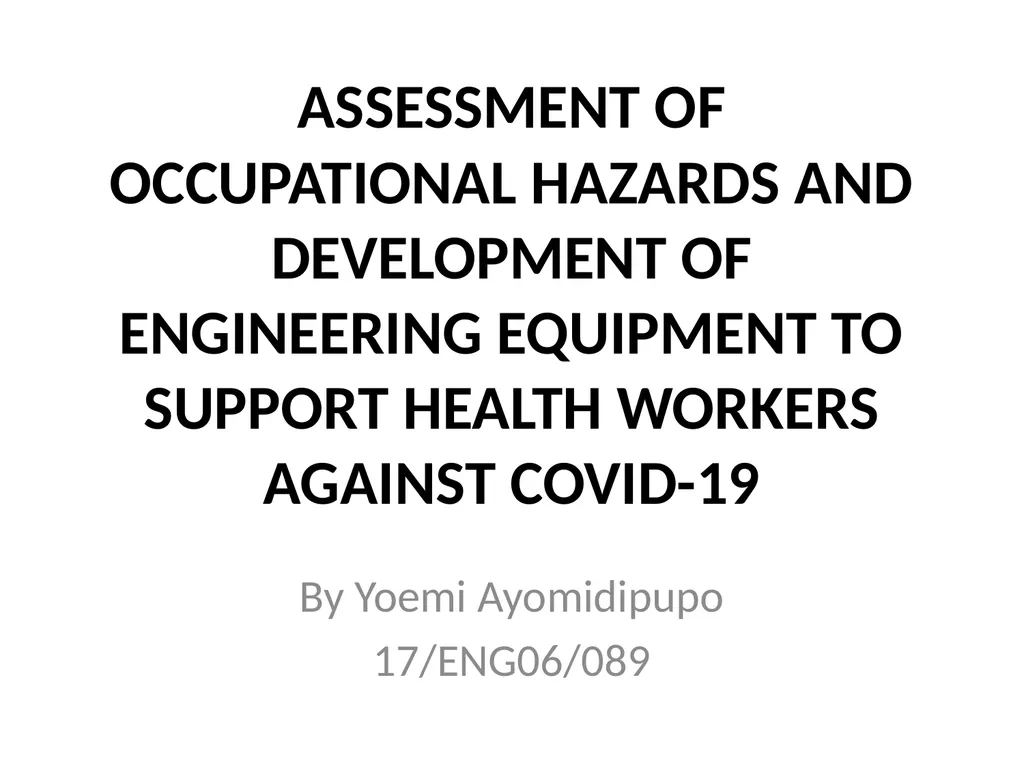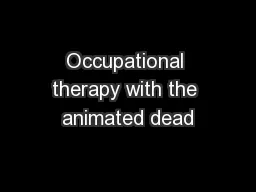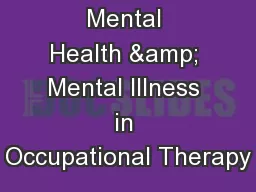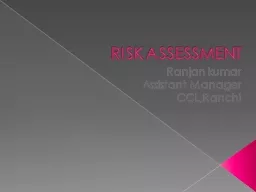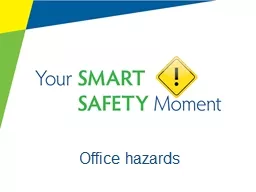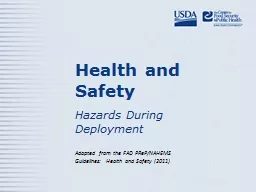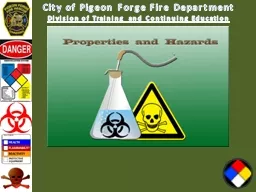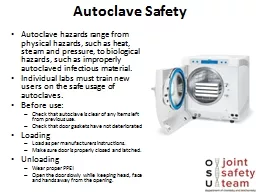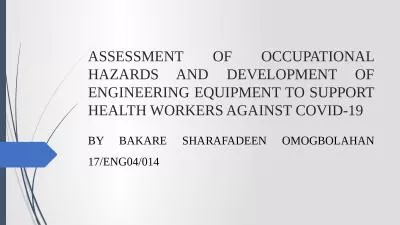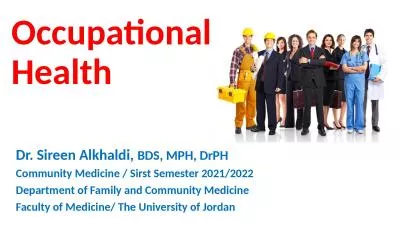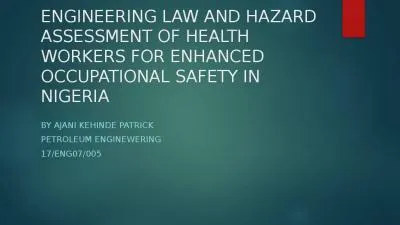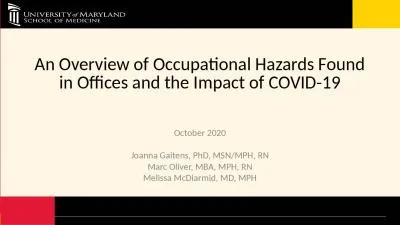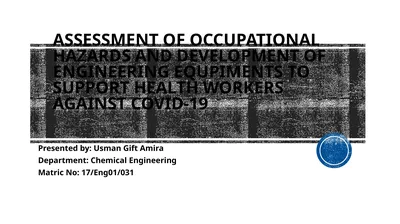ASSESSMENT OF OCCUPATIONAL HAZARDS AND DEVELOPMENT
Author : stefany-barnette | Published Date : 2025-08-04
Description: ASSESSMENT OF OCCUPATIONAL HAZARDS AND DEVELOPMENT OF ENGINEERING EQUIPMENT TO SUPPORT HEALTH WORKERS AGAINST COVID19 By Yoemi Ayomidipupo 17ENG06089 HEALTH WORKERS A health worker is one who delivers care and services to the sick and
Presentation Embed Code
Download Presentation
Download
Presentation The PPT/PDF document
"ASSESSMENT OF OCCUPATIONAL HAZARDS AND DEVELOPMENT" is the property of its rightful owner.
Permission is granted to download and print the materials on this website for personal, non-commercial use only,
and to display it on your personal computer provided you do not modify the materials and that you retain all
copyright notices contained in the materials. By downloading content from our website, you accept the terms of
this agreement.
Transcript:ASSESSMENT OF OCCUPATIONAL HAZARDS AND DEVELOPMENT:
ASSESSMENT OF OCCUPATIONAL HAZARDS AND DEVELOPMENT OF ENGINEERING EQUIPMENT TO SUPPORT HEALTH WORKERS AGAINST COVID-19 By Yoemi Ayomidipupo 17/ENG06/089 HEALTH WORKERS A health worker is one who delivers care and services to the sick and ailing either directly as doctors and nurses or indirectly as aides, helpers, laboratory technicians, or even medical waste handlers. There are approximately 59 million healthcare workers worldwide. THE CORONA VIRUS (COVID-19) The 2019–20 coronavirus pandemic is an on-going pandemic of the corona virus disease (COVID-19), caused by severe acute syndrome coronavirus 2 (SARS-CoV-2). The outbreak started in Wuhan Hubei province, China, in December 2019. The World Health Organization(WHO) declared the outbreak to be a Public Health Emergency of International Concern on 30 January 2020 and recognized it as a pandemic on 11 March 2020. As of 8 April 2020, approximately 1.44 million cases of COVID-19 have been reported in 209 countries and territories, resulting in approximately 83,400 deaths. About 308,000 people have recovered. COVID 19 The virus is mainly spread during close contact and by small droplets produced when those infected cough, sneeze or talk. These droplets may also be produced during breathing; however, they rapidly fall to the ground or surfaces and are not generally spread through the air over large distances. People may also become infected by touching a contaminated surface and then their face. The virus can survive on surfaces for up to 72 hours. It is most contagious during the first three days after onset of symptoms, although spread may be possible before symptoms appear and in later stages of the disease. COVID-19 Common symptoms include fever, cough and shortness of breath. Complications may include pneumonia and acute respiratory distress syndrome. The time from exposure to onset of symptoms is typically around five days, but may range from two to 14 days. There is no known vaccine or specific antiviral treatment. Primary treatment is symptomatic and supportive therapy. Recommended preventive measures include hand washing, covering one's mouth when coughing, maintaining distance from other people, and monitoring and self-isolation for people who suspect they are infected. Authorities worldwide have responded by implementing travel restrictions, quarantines, curfews, workplace hazard controls, and facility closures. OCCUPATIONAL HAZARDS Occupational hazard as a term signifies both long-term and short-term risks associated with the workplace environment and is a field of study within occupational safety and health and public health. An occupational hazard is a hazard experienced in
